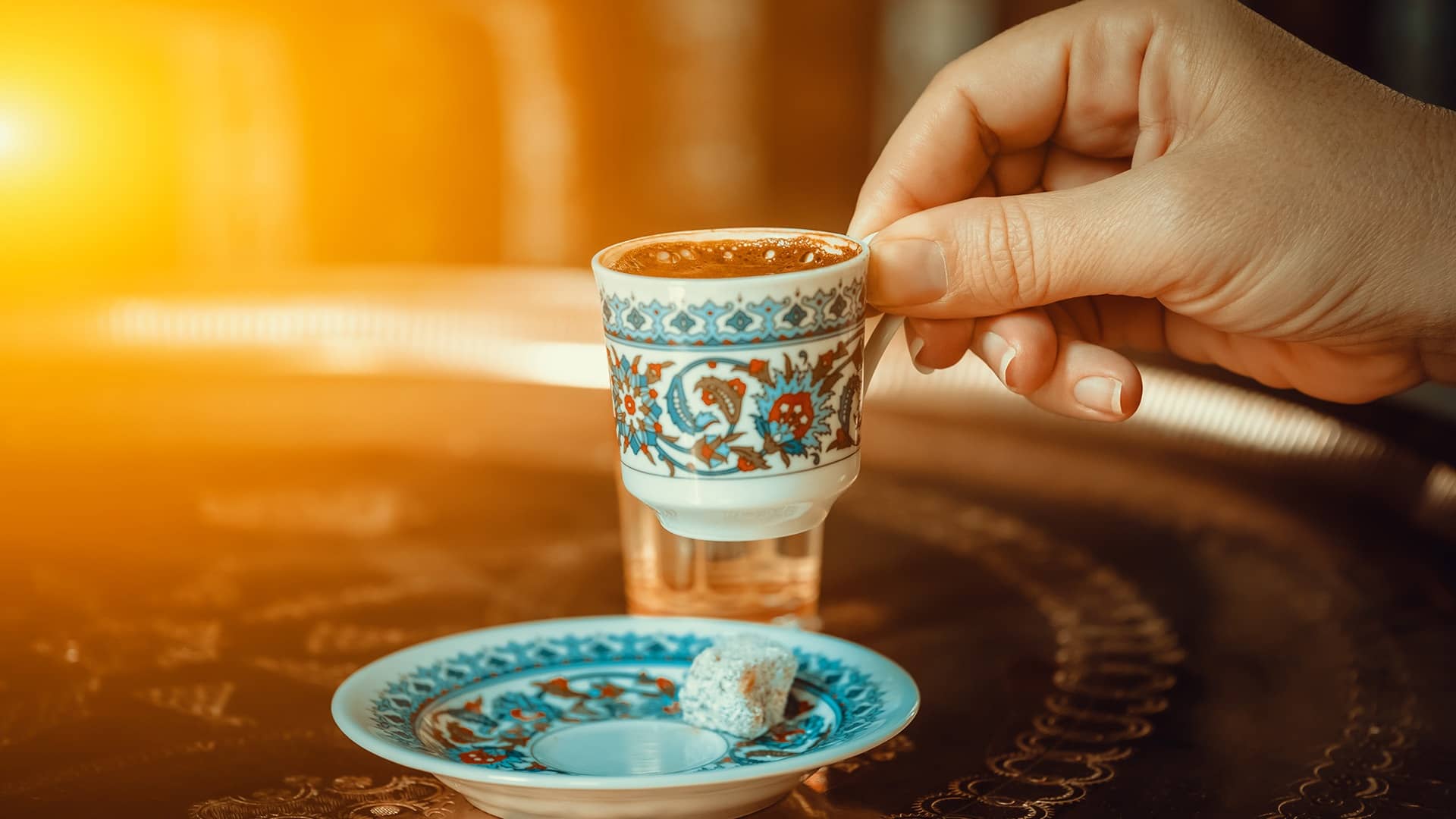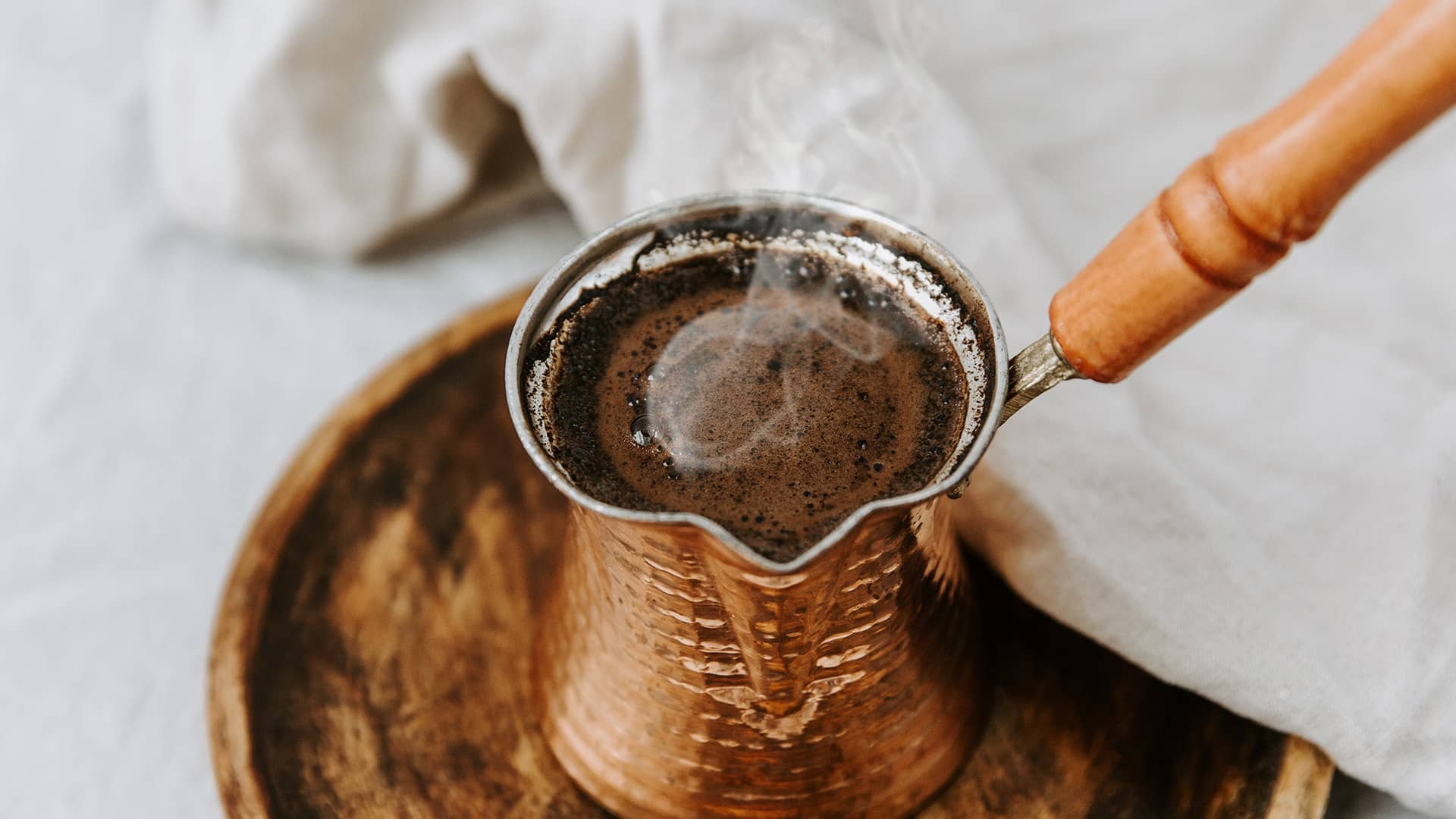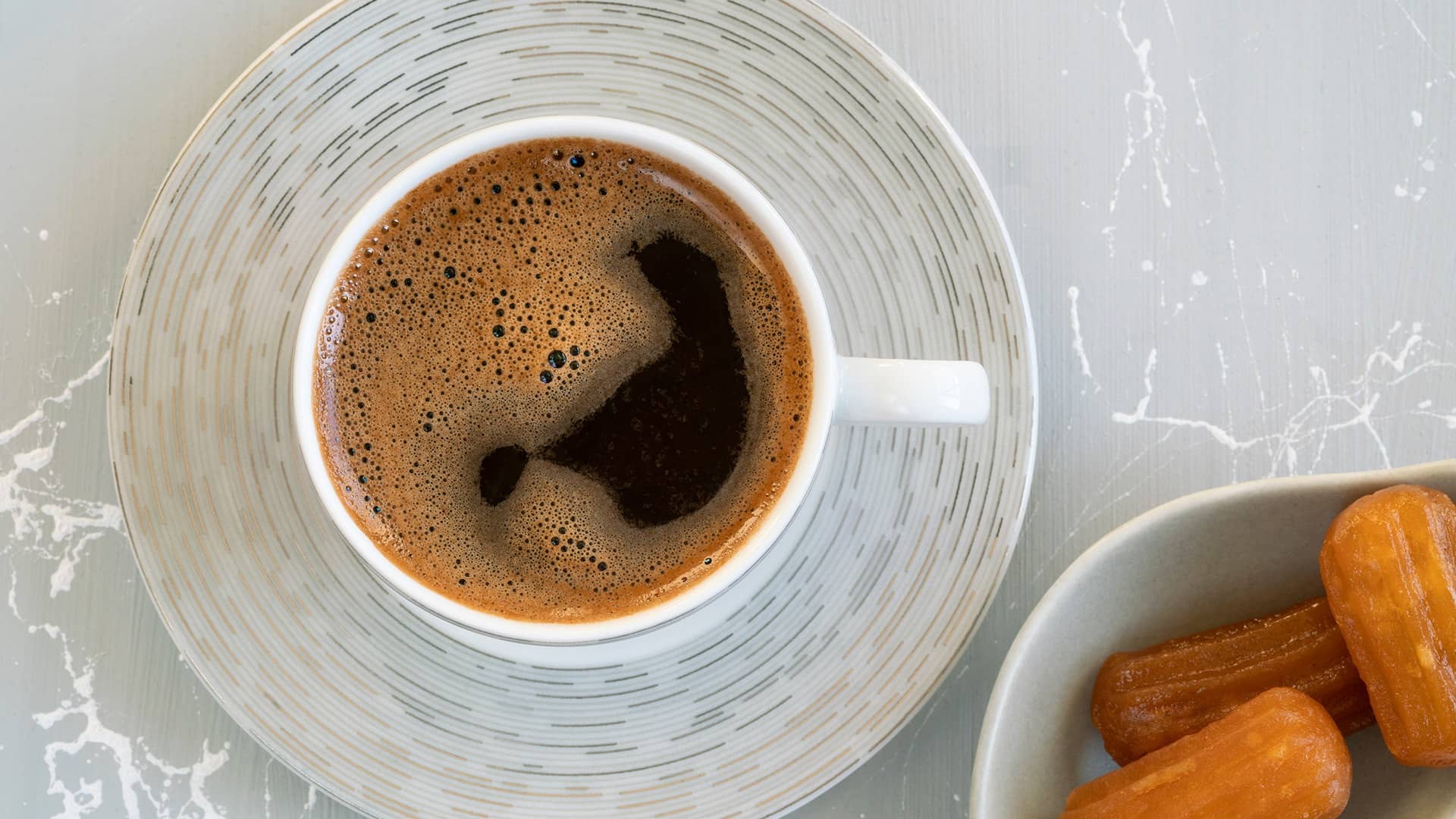

experiences
Turkish Coffee
Much More Than Coffee
Nineteenth century Italian traveller Edmondo de Amicis who visited and remained here for a time writes: “There is coffee at the top of the Galata Tower and the Beyazıt Tower, coffee on the steamboats, coffee in the markets. Wherever ne happens to roam in İstanbul, simply by shouting ‘coffee!’ without even looking, one will be holding a coffee cup within three minutes.”
Besides the mesmerizing smell, delectable taste, and other redeeming stimulant and anti-exhaustion- qualities, Turkish coffee is a perfect tool for bringing people together.
The place of coffee in the social life s best indicated by its multitude of roles. In the morning, Turkish coffee sober people up and brings dynamism in the downtown. Coffee is the common ground for commercial relations: No negotiation is concluded without a cup of coffee. Lunches are traditionally followed by a cup of Turkish coffee to avoid the heaviness of the meal affect the work performance in the afternoon.
The Turkish coffee is like a distinguished member of the society. It is part of the tradition to offer Turkish coffee to guests, and have a cup of Turkish coffee while chitchatting. As the saying goes, “ A cup of coffee commits one to forty years of friendship.”
The coffee also forms one of the preliminary rituals preceding the nuptial ceremony as the bride-to-be prepares and serves Turkish coffee to the suitor and his elders. The taste and quality of the coffee, and the manner it is served would be closely watched as indications of the skilfulness of the bride-to-be.
It is believed that shapes of coffee grounds left in the cup provides insights into the future. And reading coffee grounds is a favourite pastime for those who love to have good news.
The coffee culture has given rise to development of many handicrafts, and decorated coffee cups, coffeepots, or coffee trays are among the most sought-after souvenirs from Türkiye.
Much more than a simple drink: five centuries of tradition
Coffee beans arrived in the Ottoman lands more than five centuries ago and became a prominent component of Turkish culture. This brown, mellow yet strong drink arrived in İstanbul at the beginning of the 16th century, became highly popular and started shaping history. With a newly developed technique of brewing, coffee, and coffee-houses (kahvehane) quickly spread all around the Empire.
The merits of coffee are not l m ted by that. The coffeehouses turned into gathering spaces and they gradually became an important part of the Ottoman social life where books were read aloud, poetry recited, literary conversations were held.
In addition to the creation of coffee places, this exceptional drink has also started shaping language, and numerous terms were created after coffee in Turkish: ‘kahverengi’ (coffee-coloured) means brown and ‘kahvaltı’ (below-the-coffee) means breakfast.
Today, the local coffee-houses in neighbourhoods are still a part of the heritage, providing a space for conversation and pastimes. Coffee is a part of everyday life as a rite of friendship and a moment of pause for those who want to take a break from the stress of all the hours.
How to prepare the Turkish coffee?
A distinctive way of presentation and drinking habit developed with dedicated utensils specifically crafted for brewing and serving. Amongst these, cezve (the coffeepot) and fincan (coffee cup) are the essentials for preparation. To prepare a delectable cup of Turkish coffee, it is essential to use Turkish coffee beans freshly ground to a powder.
Place a teaspoon of coffee in a small, empty and dry cezve (small long-handled pot)
Add the desired amount of sugar
Plain – No sugar added
A little sweet – 1 sugar cube (2-3 g)
Medium sweet – 1 ½ sugar cubes (3-4.5 g)
Very sweet – 2 sugar cubes (4-6 g)
Pour into the pot one coffee cup of room temperature water.
Stir the mixture well before placing the cezve over the fire. And never stir it after it is placed over the fire.
Opt for low heat to allow approximately 3 minutes for the coffee to cook. The first time the coffee rises (at about 80º C): Lift the cezve from the flame before the mixture rises to the brim and spoon equal amounts of the foam into the cups. Put the cezve back over the fire.
The second time the coffee rises (at about 90º C), more foam is formed. Again, remove from the fire before the mixture rises to the brim. Let it sit for a few seconds.
Take care not to let the coffee boil to avoid it becoming bitter and watery. Serve with a glass of water and a piece of lokum (Turkish delight).
Traditionally Turkish coffee is served with a small glass of water and a piece of lokum.
The water is taken before the coffee, in order to cleanse and prepare the palate to fully appreciate the richness of the aromas in the coffee.
What my fortune is, so will tell my coffee cup!”
The coffee culture is often accompanied by fortune telling called “tasseography” by reading the coffee grounds left in the cup and on the saucer.
The intention of this reading is to convey good news, make life more liveable, and offer a hopeful outlook on the future.
This “past me” generated its own symbols. The important part of reading Turkish coffee grounds is to interpret the impression and not isolated symbols. However, here are some of the classics that might help you imagine the rest:
double line: a journey to somewhere
fish: good luck, kısmet
bird: good news
eye: someone’s evil eye
peacock: money
seahorse: incredible fortune
Tasting Turkish Coffee: an experience like no other
You may taste Turkish coffee anywhere ranging from the guest rooms of your Turkish friends to any hotel you stay, to the village coffee houses and luxurious restaurants.
The coffee culture has adapted itself to diverse locations and traditions with in the country. These traditions offer a variety of beautiful experiences about the Turkish coffee.
First, coffee consumption spread around port cities such as İstanbul and İzmir. With the passing of time, each city and region used its savoir faire and developed a different way of brewing and serving coffee with its own ingredients like pistachios, almonds, turpentine, carob, etc.
One thing is for sure when it comes to discover Turkish coffee: anywhere in Türkiye you will be able to sip a good coffee and enjoy breath-taking sceneries which will only enhance the flavoursome taste of this beautiful drink.
Did You Know That?
- In 2013, UNESCO inscribed Turkish coffee culture and tradition on the Representative List of the Intangible Cultural Heritage of Humanity and became the first cultural drink to be part of the list.
- The method of brewing Turkish coffee has remained unchanged for centuries.
- The spread of coffee throughout the world was started by the Ottoman Empire.
- Turkish coffee culture has developed many utensils such as skillets, coffee coolers, mills, cups and saucers and coffeepots.
- The fresher the coffee, the more delicious it tastes; therefore, coffee household utensils measure four or five cups at most. This means that, depending on need, coffee is roasted and grounded freshly, making coffee utensils an indispensable part of Turkish kitchens.








